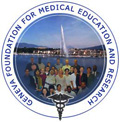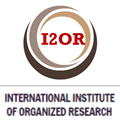Espectro aurículo-facial aislado. Presentación de una paciente
Resumen
Palabras clave
Referencias
Murialdo G, Piazzi A, Badolati G, Calcagno E, Berio A. Oculo-auriculo-vertebral spectrum with myopathy and velopharyngeal insufficiency. A case report with a non-branchiomeric muscle biopsy. Pediatr Med Chir [Internet]. 2016 [citado 7 Oct 2016]38(2):121. Disponible en: https://www.ncbi.nlm.nih.gov/pubmed/27345603
Wang P, Fan Y, Chen X. The etiology research progress of oculo-auriculo-vertebral spectrum. Lin Chung Er Bi Yan Hou Tou Jing Wai Ke Za Zhi [Internet]. 2015 [citado 7 Oct 2016];29(24):2184-8. Disponible en: https://www.ncbi.nlm.nih.gov/pubmed/27093828
Bartel-Friedrich S. Congenital auricular malformations: description of anomalies and syndromes. Facial Plast Surg [Internet]. 2015 [citado 7 Oct 2016];31(6):567-80. Disponible en: https://www.ncbi.nlm.nih.gov/pubmed/26667631
Beleza-Meireles A, Hart R, Clayton-Smith J, Oliveira R, Reis CF, Venâncio M, et al. Oculo-auriculo-vertebral spectrum: clinical and molecular analysis of 51 patients. Eur J Med Genet [Internet]. 2015 [citado 7 Oct 2016];58(9):455-65. Disponible en: https://www.ncbi.nlm.nih.gov/pubmed/26206081
Sleifer P, Gorsky Nde S, Goetze TB, Rosa RF, Zen PR. Audiological findings in patients with oculo-auriculo-vertebral spectrum. Int Arch Otorhinolaryngol [Internet]. 2015 [citado 7 Oct 2016];19(1):5-9. Disponible en: https://www.ncbi.nlm.nih.gov/pubmed/25992144
Guida V, Sinibaldi L, Pagnoni M, Bernardini L, Loddo S, Margiotti K, et al. A de novo proximal 3q29 chromosome microduplication in a patient with oculo auriculo vertebral spectrum. Am J Med Genet A [Internet]. 2015 [citado 7 Oct 2016];167A(4):797-801. Disponible en: https://www.ncbi.nlm.nih.gov/pubmed/25735547
Beleza-Meireles A, Clayton-Smith J, Saraiva JM, Tassabehji M. Oculo-auriculo-vertebral spectrum: a review of the literature and genetic update. J Med Genet [Internet]. 2014 [citado 7 Oct 2016];51(10):635-45. Disponible en: https://www.ncbi.nlm.nih.gov/pubmed/25118188
Colovati ME, Bragagnolo S, Guilherme RS, Dantas AG, Soares MF, Kim CA, et al. Atypical 581-kb 22q11.21 deletion in a patient with oculo-auriculo-vertebral spectrum phenotype. Cytogenet Genome Res [Internet]. 2015 [citado 7 Oct 2016];147(2-3):130-4. Disponible en: http://www.ncbi.nlm.nih.gov/pubmed/26919065
Manara R, Schifano G, Brotto D, Mardari R, Ghiselli S, Gerunda A, et al. Facial asymmetry quantitative evaluation in oculoauriculovertebral spectrum. Clin Oral Investig [Internet]. 2016 [citado 7 Oct 2016];20(2):219-25. Disponible en: http://www.ncbi.nlm.nih.gov/pubmed/26578120
El Mansoury J, Mbekeani JN. Late recognition of a case of oculo-auriculo-vertebral spectrum. Optom Vis Sci [Internet]. 2016 [citado 7 Oct 2016];93(11):1449-1453. Disponible en: https://www.ncbi.nlm.nih.gov/pubmed/27755235
Enlaces refback
- No hay ningún enlace refback.
Copyright (c) 2017 Vivian Susana Guerra Batista, Gisell Perez Breff, Elayne Esther Santana Hernández, Víctor Jesús Tamayo Chang











 22 de abril de 2024
22 de abril de 2024


